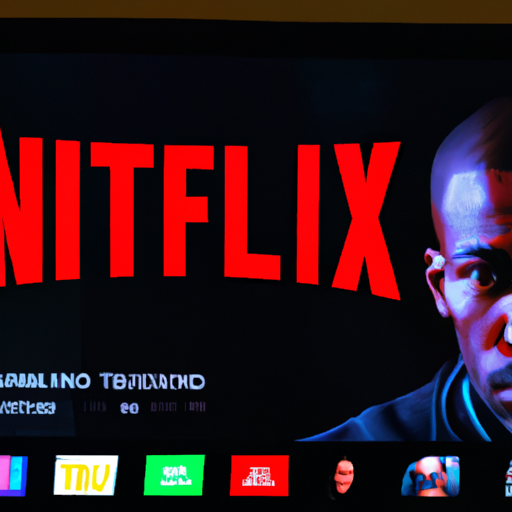- Sin Categoría
- 10/10/2022
Blockchain Facts: What Is It, How It Works, and How It Can Be Used
Content
But only 3% of CIOs have a form of live and operational blockchain for their business, and those solutions that do exist focus mostly on efficiency of existing process versus business disruption and new value creation. Gideon Greenspan is Founder and CEO of Coin Sciences Ltd, the company developing the popular MultiChain platform for private blockchains. If you think you have a real blockchain use case, Gideon and his team at MultiChain would love to hear from you.

Each participant operating a full node maintains a complete copy of a ledger that updates with new transactions as they occur. Databases are modified via “transactions” which represent a set of changes to the database which must be accepted or rejected as a whole. For example, in the case of an asset ledger, a payment from one user to another is represented by a transaction that deducts the appropriate quantity from one row, and adds it to another. If your requirements are fulfilled by today’s relational databases, you’d be insane to use a blockchain. Satoshi Nakamoto created the Bitcoin blockchain although the foundations for the technology had been laid down long beforehand.
What’s the value of blockchain?
In this case the blockchain acts to define the authoritative chronology, without which transactions cannot be processed at all. These rules are fundamentally different from the constraints that appear in traditional databases, because they relate to the legitimacy of transformations rather than the state of the database at a particular point in time. Every transaction is checked against these rules by every node in the network, and those what is blockchain development that fail are rejected and not relayed on. This isn’t really a condition, but rather an inevitable consequence of the previous points. If we have a database modified directly by multiple writers, and those writers don’t fully trust each other, then the database must contain embedded rules restricting the transactions performed. In the fullest sense, this means that transactions created by different writers often depend on one other.
Blockchain is an open ledger that several parties can access at once. One of its primary benefits is that the recorded information is hard to change without an agreement from all parties involved. IBM explained that each new record becomes a block with a unique, identifying hash.
With public blockchains, there are questions about ownership and who is responsible when problems arise. Although they’re all under the umbrella of distributed ledger technology, each one is a distinct entity. Early concern over the high energy consumption was a factor in later blockchains such as Cardano , Solana and Polkadot adopting the less energy-intensive proof-of-stake model.
The growing list of applications and use cases of blockchain technology in business and life
In 2008, a developer or group of developers working under the pseudonym Satoshi Nakamoto developed a white paper that established the model for blockchain, including the hash method used to timestamp blocks. One year later, in 2009, Satoshi Nakamoto implemented a blockchain using the currency Bitcoin. Confirmed blocks are very difficult to reverse, which means data is difficult to remove or change. In early 2020, blockchain company Theta Labs partnered with Google Cloud. The partnership will allow Google Cloud users to deploy and run nodes from Theta’s blockchain network. Blockchain is a record-keeping technology designed to make it impossible to hack the system or forge the data stored on it, thereby making it secure and immutable.
Even if a computer on the network were to make a computational mistake, the error would only be made to one copy of the blockchain. For that error to spread to the rest of the blockchain, it would need to be made by at least 51% of the network’s computers—a near impossibility for a large and growing network the size of Bitcoin’s. A smart contract is a computer code that can be built into the blockchain to facilitate, verify, or negotiate a contract agreement.
However, it has been shown that blockchain is also a reliable method of recording data about other types of transactions. Blockchain is a method of storing data that makes it difficult or impossible to update, hack, or defraud the system. A blockchain is simply a digital ledger of transactions that is replicated and distributed across the blockchain’s complete network of computer systems. One of the negatives ofdigital transformationhas been the growth in personal data theft. Database hacks have exposed names, Social Security numbers, birthdates, addresses, and driver’s license numbers of millions of Americans, such as the 2017 Equifax database breach. Booz Allen Hamilton wrote that blockchain data structures harden network security by reducing single-point-of-failure risk, making a database breach difficult.
Many people believe that smart contracts were invented by the Ethereum network, however, the American computer scientist who invented BitGold in 1994, Nick Szabo, first came up with the concept. The blockchain, on the other hand, lies underneath the digital assets that regularly updates the state of the network, i.e. balances. This cuts out the need for a middleman and essentially for a bank or bank insurance. Immutability does not apply to permissioned blockchains, and as such, they are more vulnerable to hacking than a public blockchain. The only people auditing and transacting on the blockchain are the ones given the classification and access to do so. This makes it easier for companies to hold people accountable for any attempt at entering wrongful data into the system.
- The same is true of Ethereum, which is responsible for smart contract technology.
- If that information is edited in any way, then the hash code changes as well.
- After all, in many cases for business owners, updating existing infrastructure with blockchain technology may be costly, labor-intensive and not really worth it.
- With many practical applications for the technology already being implemented and explored, blockchain is finally making a name for itself in no small part because of bitcoin and cryptocurrency.
- The same would occur if the bad actor were to attack the new fork of Bitcoin.
- A common belief has been that cryptocurrency is private and untraceable, thus leading many actors to use it for illegal purposes.
And disputes can be resolved easily by participants’ validating previous blocks. Blockchain thus greatly reduces, if not eliminates, the kind of execution, traceability, and coordination problems that we’ve discussed. Since participants have their own individual copies of the blockchain, each party can review the status of a transaction, identify errors, and hold counterparties responsible for their actions.
The technology uses biometric systems to scan the faces of individuals applying for passports, driver’s licenses and other government issued IDs. By viewing biometric systems on blockchains, governments can more easily catch identity thieves forging fake passports, certificates and IDs from other countries. If the answer to the first question is no, your business should consider a different solution, such as workflow management or the sign-off process. For the second question, if your business needs a group of selective and trusted entities, you might want to consider a permissioned blockchain. On the other hand, if your business needs a group of public anonymous entities, you should have a public blockchain. Blockchain technology has only been around for a dozen years, and businesses are still exploring new ways to apply the technology to support their operations.
Does blockchain have a database?
So far we’ve described a distributed database in which transactions can originate in many places, propagate between nodes in a peer-to-peer fashion, and are verified by every node independently. Well, a blockchain’s job is to be the authoritative final transaction log, on whose contents all nodes provably agree. Taking this further, one nice feature of blockchains is that transactions can be created collaboratively by multiple writers, without either party exposing themselves to risk. This is what allows delivery versus payment settlement to be performed safely over a blockchain, without requiring a trusted intermediary. You might think that mistrust only arises between separate organizations, such as the banks trading in a marketplace or the companies involved in a supply chain.
Despite blockchain’s infancy, businesses across the globe still have many successful use cases in payment, traceability and identity management, suggesting that the potential of blockchain is still to be discovered. If personal identity information is held on a blockchain, that puts us just one step away from also being able to vote using blockchain technology. Using blockchain technology can make sure that nobody votes twice, only eligible voters are able to vote, and votes cannot be tampered with. What’s more, it can increase access to voting by making it as simple as pressing a few buttons on your smartphone. At the same time, the cost of running an election would substantially decrease. Keeping data such as your Social Security number, date of birth, and other identifying information on a public ledger (e.g., a blockchain) may actually be more secure than current systems more susceptible to hacks.
Real estate
Each computer in a blockchain network maintains a copy of the ledger to prevent a single point of failure, and all copies are updated and validated simultaneously. One of the most surprising applications for blockchain can be in the form of improving government. Ligero provides lightweight, scalable protocols for secure multiparty computation and zero-knowledge proofs, providing a highly capable platform for facilitating decentralized collaboration both on and off blockchain.
The largest smart contract to date is the Distributed Autonomous Organization . It enabled its members to participate and invest directly using their private cryptographic keys, as well as vote on what to invest in, sans lawyers, fees, boardrooms and enormous salaries being paid to CEOs. In contrast, on a blockchain system, the transfer of money and digital products is automatic and direct, with no middleman needed for the arbitrage. This might be seen as a good thing because you have more control over the transfer of money. Despite these key areas where blockchain can be leveraged, the technology in the IoT is still dependent on startups.
Technical innovators turn to the IBM Blockchain Platform, the leading Hyperledger Fabric platform, to build, operate, govern and grow blockchain solutions across any computing environment through Red Hat® OpenShift®. Tracing fresh seafood from the moment it’s caught IBM Food Trust is helping Raw Seafoods increase trust across the food supply chain by tracing every catch right from the water — all the way to supermarkets and restaurants. No participant can change or tamper with a transaction after it’s been recorded to the shared ledger. If a transaction record includes an error, a new transaction must be added to reverse the error, and both transactions are then visible. IBM Food Trust is the only network of its kind to connect participants across the food supply through a permissioned, permanent and shared record of food system data.
Logistics and supply chain tracking
Satoshi Nakamoto is, in fact, a pseudonym and the author of the Bitcoin whitepaper that appeared in 2008. Smart contracts are a game changer in the blockchain world since they allow us to cut out the intermediaries. They are set up between two or more parties and self-execute based on a set of predetermined conditions. Cryptocurrencies are really just a subset of the broader range of applicabilities of blockchain technologies. There is a central entity and the actions can be deleted and overridden, which makes sense for corporations, or a large or small business that needs control.
Applications for Blockchain Technology
Blockchain technology could be used to execute energy supply transactions, but also to further provide the basis for metering, billing, and clearing processes, according to PWC. Other potential applications include documenting ownership, asset management, origin guarantees, emission allowances, and renewable energy certificates. Blockchain’s immutable ledger makes it well suited to tasks such as real-time tracking of goods as they move and change hands throughout the supply chain. Using a blockchain opens up several options for companies transporting these goods.
Blockchain is disrupting the banking system by providing a peer-to-peer payment system with the highest security and low fees. Banking has transfer fees, which can be both expensive and time-consuming for people. Also, sending money overseas becomes even more difficult due to the exchange httpss://globalcloudteam.com/ rate and other hidden costs. Because of the millions of dollars granted to various institutions, the opaque donation process is ripe for inefficiency and corruption. Blockchain could reduce the number of actors and managers, could streamline the process, and improve verification.
From jewelry to insurance to food, IBM Blockchain can elevate that trust to an entirely new level by helping parties transacting together validate and share immutable transaction records on a private, distributed ledger. Across industries around the world, blockchain is helping transform business. Greater trust leads to greater efficiency by eliminating duplication of effort.
When the system is decentralized, the nodes, computers, and servers are located in different places and they are much more difficult to hack. Blockchain-based supply chain solutions help track where goods come from and record all data in chronological order. All participants in the supply chain can check that everything is going well and how a particular item is being transported from the manufacturer to the store shelf.




